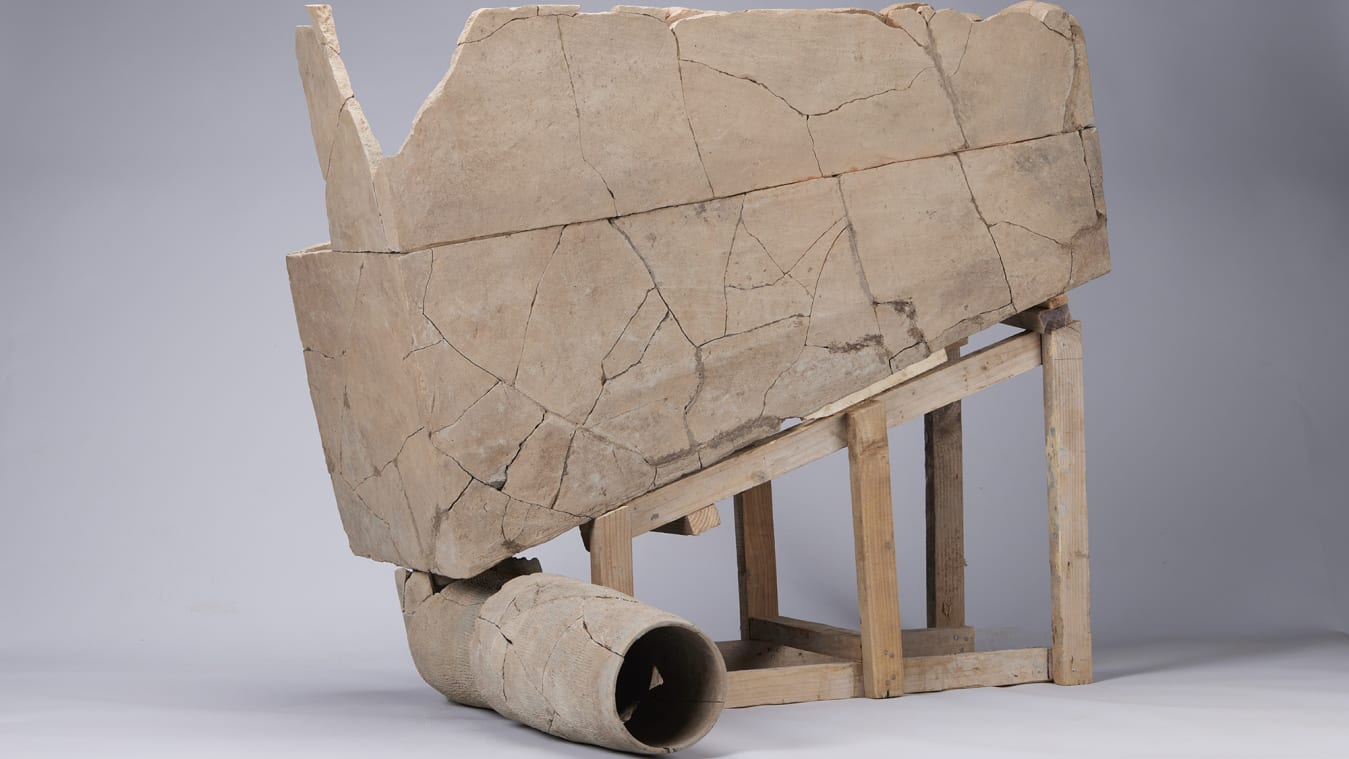HONG KONG (CNN) — A team of archaeologists in China have discovered the remains of the world’s oldest toilet.
Last summer, a research team unearthed broken parts of a 2,400-year-old toilet and a bent flush pipe from the ruins of an ancient palace at the Yuyang archaeological site in China, according to Chinese state media.
Details of the discovery emerged last week and have sparked great interest in China, offering a rare glimpse into the privileged and competitively advanced world of the former ruling elite.
The toilet, described by investigators as a “luxury item”, is believed to be located inside the palace, with a pipe leading to an outdoor well, the state newspaper said. China Daily.
Liu Rui of the Institute of Archeology of the Chinese Academy of Social Sciences, who was part of the excavation team, told state media ) and the succeeding Han Dynasty (206 BC-220 AD). He added that servants may have poured water into the cup each time it was used.
“The flush toilet is concrete evidence of the importance the ancient Chinese placed on sanitation,” said Liu, adding that there are very few records of indoor toilets in ancient times.
Cleaning toilets, washing, One more problem In parts of present-day China. Early in his term, Chinese President Xi Jinping vowed to “revolutionize” the country’s toilets as part of efforts to improve rural sanitation.
In an article published in the People’s Daily in 2018, Shi said, “The toilet issue is not a trivial matter, it is an important aspect of building civilized cities and rural areas.” “This work should be carried out as a specific task for rural revival. Such defects affecting the quality of life of the people should be rectified with great effort.
This invention was preceded by the invention of the first flush toilet The reason given Widely attributed to English courtier John Harrington, who is said to have installed one for Queen Elizabeth in the 16th century. North West India 4,000-year-old drainage systems may have been connected to latrines.
The ruins of Yuyang, the former capital of the Qin state and later the first capital of the Han dynasty, were discovered in the 1980s. The latest discovery is part of a wider effort including how ancient Chinese dynasties lived and how they lived. How their cities were built, the company said in a report announcing the findings.
Archaeologists will examine soil samples collected from the latrines in hopes of finding out what people ate at the time. China Daily.


:quality(85)/cloudfront-us-east-1.images.arcpublishing.com/infobae/BH6NLAQGXJGADFWTENBUV7Z7RQ.jpg)
:quality(85)/cloudfront-us-east-1.images.arcpublishing.com/infobae/3GK63ATFOMFAYNUAQKUL4WUJFM.jpg)

:quality(85)/cloudfront-us-east-1.images.arcpublishing.com/infobae/SJ35ZLSJ5NB4BWVRJPSK74P7AQ.jpg)